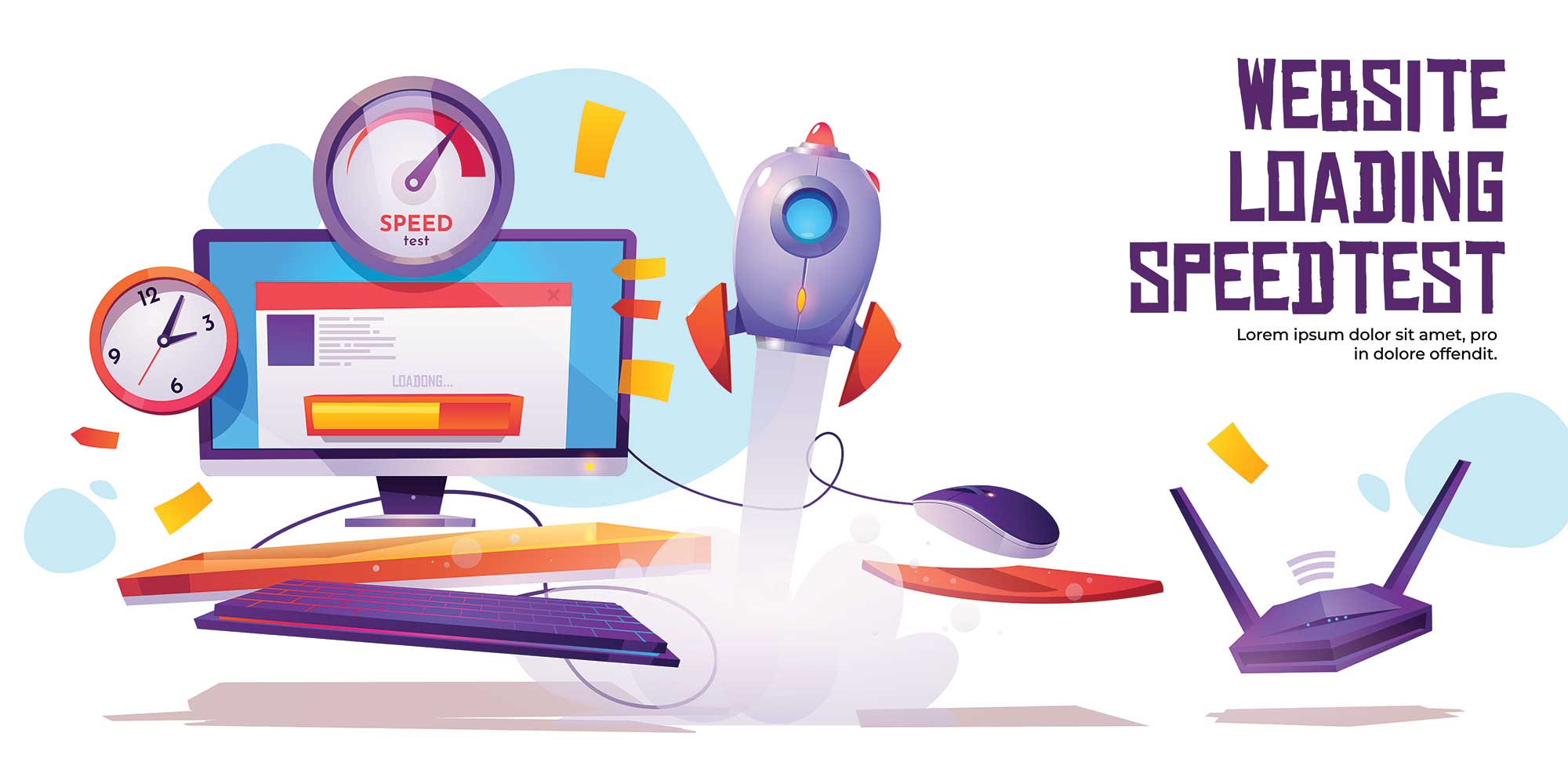Introduction:
Website speed plays a crucial role in the success of any online platform. In an age where attention spans are shrinking, users expect web pages to load quickly. If a website takes more than a few seconds to load, visitors are likely to abandon it, leading to lost revenue, lower engagement, and a negative impact on search engine rankings.
In this guide, we will explore why website speed matters, the factors that affect it, and the best practices to optimise your site’s performance.
Why Website Speed Matters
- User Experience: A slow-loading website frustrates users and leads to poor engagement. Studies show that even a one-second delay in load time can significantly reduce page views and customer satisfaction.
- SEO Rankings: Search engines like Google consider page speed as a ranking factor. Faster websites are more likely to appear higher in search results, increasing organic traffic.
- Conversion Rates: Speed affects your bottom line. Amazon found that every 100ms delay in load time cost them 1% in sales. If you're running an e-commerce site, a slow website can directly impact revenue.
- Bounce Rate: Users tend to leave a slow website quickly, increasing the bounce rate. A high bounce rate signals to search engines that your site may not be offering a good user experience, further affecting rankings.
- Mobile Experience: With mobile traffic surpassing desktop traffic, ensuring fast load times on mobile devices is critical. Google also uses mobile-first indexing, meaning your mobile site speed impacts your overall search rankings.

Factors Affecting Website Speed
Several elements contribute to website performance. Understanding these factors can help you make informed decisions about optimisation.
- Hosting Provider: A poor hosting provider can lead to slow response times. Investing in a quality hosting plan can significantly improve performance.
- Image Size: Large, unoptimised images increase load time. Properly compressed and resized images can reduce loading times without compromising quality.
- Excessive HTTP Requests: Each file (CSS, JavaScript, images, etc.) requires an HTTP request. Too many requests slow down your site.
- Unoptimised Code: Bloated or inefficient HTML, CSS, and JavaScript files can negatively impact speed.
- Lack of Caching: Without caching, web pages take longer to load as they need to be processed from scratch each time a visitor lands on your site.
- Server Response Time: A slow server response time can delay the entire page load process.
- Too Many Plugins: Excessive or poorly coded plugins can slow down your site, especially if they require multiple database queries.

How to Speed Up Your Website
Now that we understand why website speed matters and what factors affect it, let’s explore actionable steps to improve performance.
1. Choose a Fast and Reliable Hosting Provider
Your hosting provider plays a critical role in site speed. Consider using:
- Shared Hosting: Suitable for small websites, but can slow down with high traffic.
- Virtual Private Server (VPS): Offers better performance and dedicated resources.
- Dedicated Hosting: Best for high-traffic sites, providing optimal speed.
- Cloud Hosting: Scalable and efficient, ideal for growing businesses.
2. Optimise Images
Images contribute significantly to page load time. Optimise them using:
- Compression Tools: Use tools like TinyPNG or ImageOptim to reduce file size.
- Correct Formats: Use WebP instead of PNG or JPEG for better compression and quality balance.
- Lazy Loading: Load images only when they appear on the user’s screen.
3. Minimise HTTP Requests
Reduce the number of HTTP requests by:
- Combining CSS and JavaScript Files: Fewer files mean fewer requests.
- Using Inline CSS for Small Elements: Helps reduce external requests.
- Eliminating Unnecessary Plugins: Each plugin adds extra requests; remove unused ones.
4. Enable Browser Caching
Browser caching stores static files on a user’s device, reducing the need to reload them. Implement caching by:
- Using a Caching Plugin: WordPress users can use plugins like W3 Total Cache or WP Rocket.
- Setting Expiration Dates for Static Files: Define cache control rules in your .htaccess file.
5. Use a Content Delivery Network (CDN)
A CDN distributes website content across multiple servers worldwide, reducing load time by serving users from the nearest location. Popular CDN providers include:
- Cloudflare
- Amazon CloudFront
- Akamai

6. Minify and Optimise Code
Reduce unnecessary characters in your code:
- Use Minification Tools: Tools like UglifyJS and CSSNano compress JavaScript and CSS files.
- Remove Unused Code: Avoid loading unnecessary scripts.
- Enable Gzip Compression: Compress text-based files before they are sent to the browser.
7. Reduce Redirects
Excessive redirects increase load time. Minimise redirects by:
- Avoiding Unnecessary Redirect Chains: Directly link to the final URL.
- Using Correct URL Structures: Ensure internal links use the correct format.
8. Optimise Database Performance
For websites with dynamic content (such as WordPress sites), database optimisation is essential:
- Clean Up Unused Data: Remove old post revisions, spam comments, and unnecessary database entries.
- Use Indexing: Helps speed up queries.
- Limit Database Queries: Reduce the number of database calls per page load.
9. Prioritise Mobile Optimisation
With mobile traffic growing, ensure your site is mobile-friendly:
- Use a Responsive Design: Adapts to different screen sizes.
- Enable AMP (Accelerated Mobile Pages): Helps speed up mobile pages.
- Optimise Mobile Images: Serve scaled-down images for mobile devices
10. Monitor and Test Your Site Regularly
Regularly testing your website’s speed helps identify issues before they affect user experience. Use these tools:
- Google PageSpeed Insights: Provides suggestions for speed improvement.
- GTmetrix: Offers detailed speed analysis.
- Pingdom: Tests website performance and suggests optimisations.

Conclusion
Website speed is not just a technical issue—it directly impacts user experience, SEO rankings, and conversions. By implementing these optimisation techniques, you can create a faster, more efficient website that keeps users engaged and improves business outcomes. Take the time to assess your website’s current performance, make the necessary improvements, and keep monitoring for continuous enhancements.
Speed matters. Don’t let a slow website drive visitors away—start optimising today!




